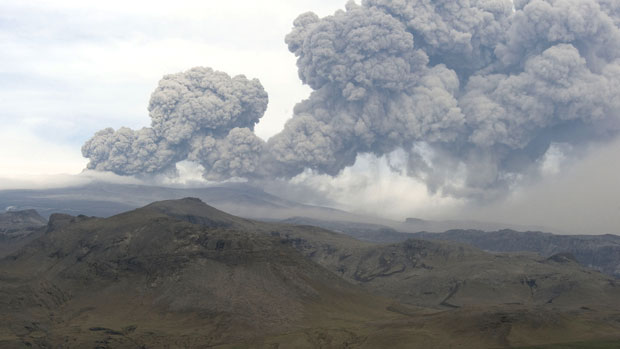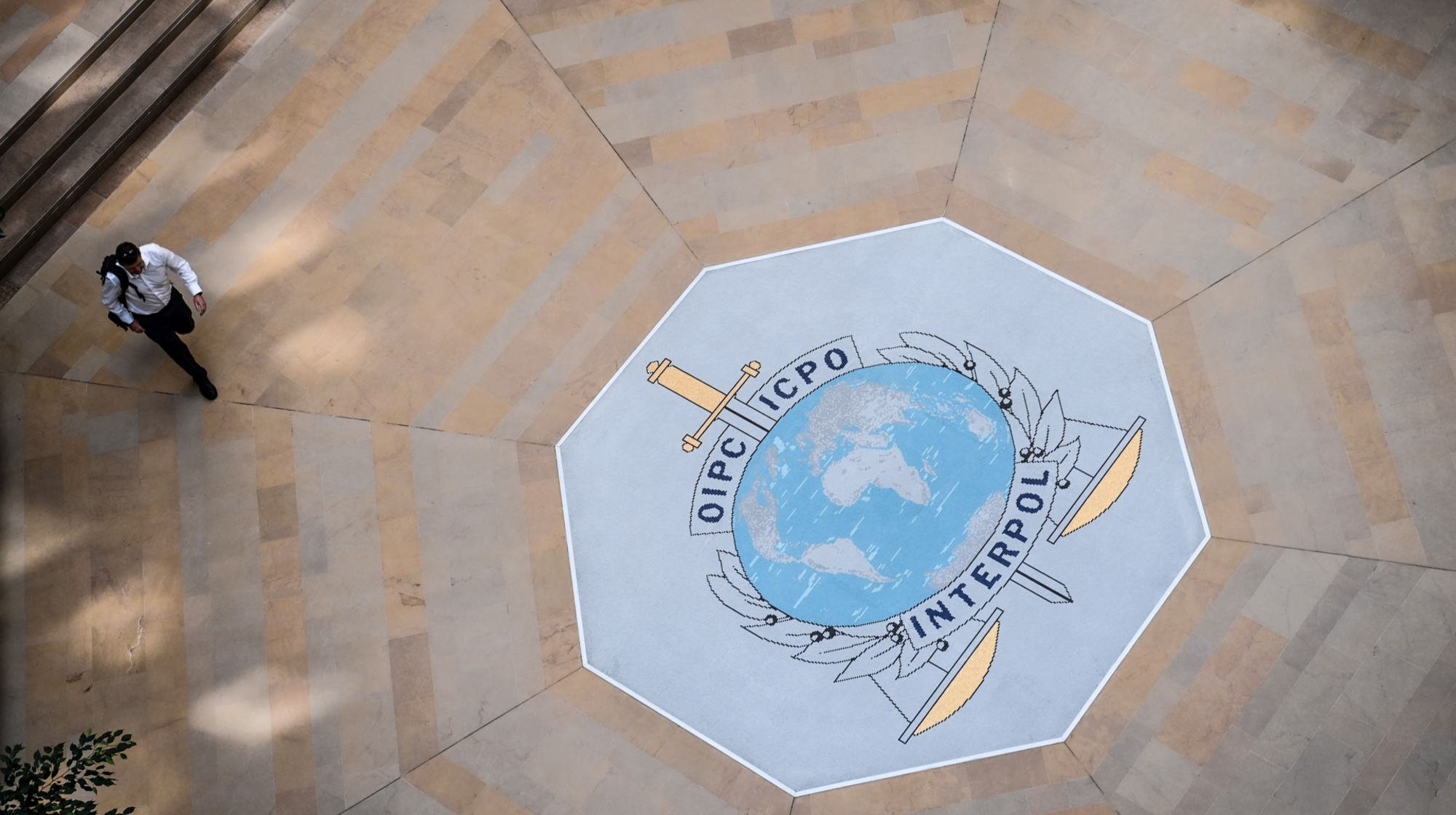Iceland volcano red alert: Will flights be grounded again?
Fears rise that recent fissure eruption near Iceland's Bardarbunga volcano could prompt further airspace closures

Iceland has put airlines on high alert after an eruption overnight near the Bardarbunga volcano.
So far, no volcanic ash has been detected but Icelandic authorities have raised the warning level from orange to red, indicating that an eruption is either imminent or under way, and that ash emissions significant enough to affect flights could happen imminently, The Guardian reports.
"The Icelandic Met Office has raised the aviation colour code over the eruption site to red and the Icelandic Air Traffic Control has closed down the airspace from the earth up to 18,000 feet," Iceland's National Crisis Coordination Centre said.
The Week
Escape your echo chamber. Get the facts behind the news, plus analysis from multiple perspectives.

Sign up for The Week's Free Newsletters
From our morning news briefing to a weekly Good News Newsletter, get the best of The Week delivered directly to your inbox.
From our morning news briefing to a weekly Good News Newsletter, get the best of The Week delivered directly to your inbox.
However, it added that "no volcanic ash has been detected" so far, and said that "seismic eruption tremor is low indicating effusive eruption without significant explosive activity".
What is the Bardarbunga volcano doing?
Bardarbunga, which is 15.5 miles wide and sits beneath Europe's largest glacier, has been showing increased seismic activity since 16 August.
Two weeks ago, Iceland's meteorological office measured the strongest earthquake in the region since 1996 and there are strong indications of magma movement. Today, scientists say that a fissure eruption 0.6 miles long appears to have started in a lava field north of the Vatnajokull glacier, and that an eruption of Bardarbunga is either imminent or already underway.
A free daily email with the biggest news stories of the day – and the best features from TheWeek.com
Why is it a risk to flights?
The biggest risk within Iceland is from flood waves under the glacier as the volcano erupts. But the volcano's smoke and ash also poses a threat to aircraft. Ash can effect visibility, while tiny debris can get sucked into a plane's engines and cause them to shut down.
What happened in April 2010?
When Eyjafjallajokull erupted, the ash cloud paralysed much of Europe's airspace for six days. It cost airlines almost $2bn, with 100,000 flights cancelled and ten million people affected, according to Bloomberg News. Millions of people were stranded abroad, while others were stuck at home missing holidays, weddings and funerals. Others attempted to travel via exceptionally busy ferries, trains and coaches. Actor John Cleese even paid £3,300 to take a taxi from Oslo to Brussels after being stranded in Norway.
Why is Iceland erupting?
Iceland itself is the result of a series of volcanic eruptions over 20 million years. It straddles two moving tectonic plates, meaning that seismic activity – and volcanic ash clouds – are a part of life. In the aftermath of Eyjafjallajokull's eruption, Thor Thordarson, a volcanologist at Edinburgh University, told the Sunday Times that volcanoes in Iceland erupt in a 140-year cycle. "In the latter part of the 20th century we were in a low period," he said. "But now there is evidence that we could be approaching a peak." Bardarbunga is located in Iceland's largest volcanic system, under the ice cap of the Vatnajokull glacier in the southwest of Iceland.
What has been done to prevent a repeat of the 2010 chaos?
According to Flight Global, most of the flights cancelled in April 2010 could have made their journeys safely, but a "total lack of preparation" and over-cautious guidance to "avoid, avoid, avoid" airspace left airlines paralysed. Since 2010, several exercises have been staged to test Europe's ability to cope with another eruption and new tools have been developed to help airlines assess risk, co-ordinate decision-making and communicate better with one another. Guidelines to simply avoid airspace have been replaced with a requirement for airlines to make their own risk assessment based on national or regional aviation authority information. Eurocontrol, the Brussels-based agency responsible for co-ordinating European airspace, has developed a tool called Evita, which will help airlines identify precisely which of their flights might be impacted by ash. The agency will also chair a new European Aviation Crisis Coordination Cell (EACCC) to co-ordinate decision making. In-flight reports from pilots have also been increased to enable airlines to determine the exact location and concentration of ash.
Will we see a repeat of April 2010?
Martin Hensch, a seismologist at Iceland's met office, said the risk of any disruptive ash cloud similar to the one in 2010 would depend on how high any ash would be thrown, how much there is and how fine-grained it is, reports The Guardian. Geologist Andy Hooper agrees, but said yesterday that in his view a repeat of the 2010 flight chaos is unlikely. Hooper argues that the weather in 2010 "conspired against civil air authorities and travellers," with dry air and consistent northerly winds that caused the ash to spread very deeply into Europe. More significant still, Hooper says, is that there is no longer a "zero tolerance" policy to ash within the aviation industry, so it is unlikely that flight bans will be as comprehensive next time round. Flight Global says it remains to be seen whether all of the new tools to deal with an ash cloud crisis will be effective in a real event. "Will this work?" it asks. "Certainly better than in April 2010, because it could not possibly be worse."
-
 5 fairly vain cartoons about Vanity Fair’s interviews with Susie Wiles
5 fairly vain cartoons about Vanity Fair’s interviews with Susie WilesCartoon Artists take on demolition derby, alcoholic personality, and more
-
 Joanna Trollope: novelist who had a No. 1 bestseller with The Rector’s Wife
Joanna Trollope: novelist who had a No. 1 bestseller with The Rector’s WifeIn the Spotlight Trollope found fame with intelligent novels about the dramas and dilemmas of modern women
-
 Codeword: December 20, 2025
Codeword: December 20, 2025The daily codeword puzzle from The Week
-
 How Bulgaria’s government fell amid mass protests
How Bulgaria’s government fell amid mass protestsThe Explainer The country’s prime minister resigned as part of the fallout
-
 Femicide: Italy’s newest crime
Femicide: Italy’s newest crimeThe Explainer Landmark law to criminalise murder of a woman as an ‘act of hatred’ or ‘subjugation’ but critics say Italy is still deeply patriarchal
-
 Brazil’s Bolsonaro behind bars after appeals run out
Brazil’s Bolsonaro behind bars after appeals run outSpeed Read He will serve 27 years in prison
-
 Americans traveling abroad face renewed criticism in the Trump era
Americans traveling abroad face renewed criticism in the Trump eraThe Explainer Some of Trump’s behavior has Americans being questioned
-
 Nigeria confused by Trump invasion threat
Nigeria confused by Trump invasion threatSpeed Read Trump has claimed the country is persecuting Christians
-
 Sanae Takaichi: Japan’s Iron Lady set to be the country’s first woman prime minister
Sanae Takaichi: Japan’s Iron Lady set to be the country’s first woman prime ministerIn the Spotlight Takaichi is a member of Japan’s conservative, nationalist Liberal Democratic Party
-
 Russia is ‘helping China’ prepare for an invasion of Taiwan
Russia is ‘helping China’ prepare for an invasion of TaiwanIn the Spotlight Russia is reportedly allowing China access to military training
-
 Interpol arrests hundreds in Africa-wide sextortion crackdown
Interpol arrests hundreds in Africa-wide sextortion crackdownIN THE SPOTLIGHT A series of stings disrupts major cybercrime operations as law enforcement estimates millions in losses from schemes designed to prey on lonely users